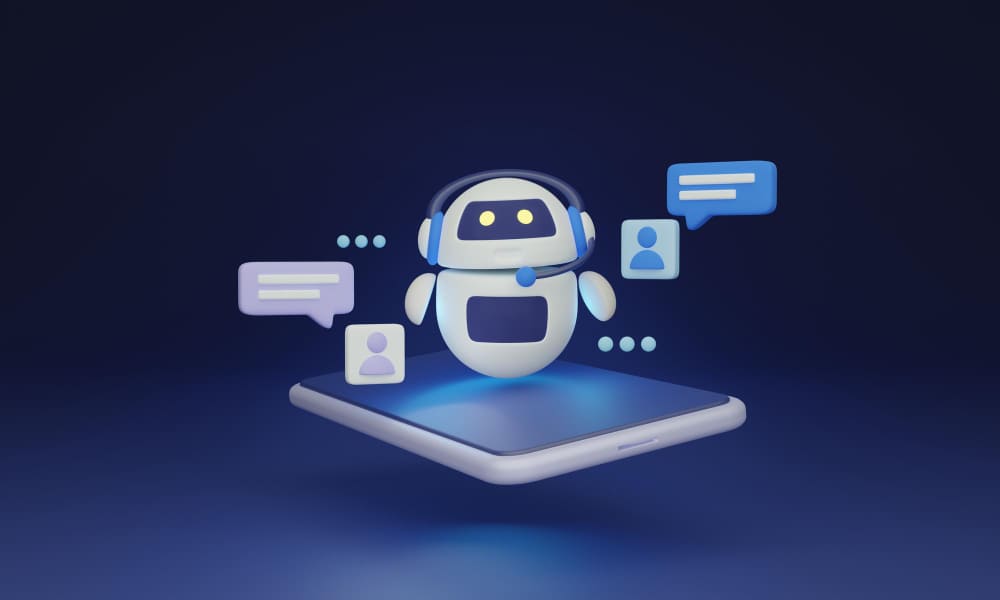Gone are the days when customers would simply settle for fast responses; they now demand personalized, human-like interactions at every touchpoint. Traditional text-based chatbots, while a great starting point, are beginning to fall short in delivering the rich, engaging experiences that customers crave. Enter video chatbots, an innovative solution that takes the concept of automated customer service to the next level by combining AI-powered capabilities with real-time video communication.
In this blog post, we’ll explore the evolution of chatbots, from text-based systems to the emerging trend of AI-powered video chatbots, and how this technology is transforming customer interactions across industries.
Understanding Traditional Text-Based Chatbots
For many businesses, text-based chatbots have been the first step into the world of automation. These chatbots operate by responding to customer queries with pre-programmed text or by using artificial intelligence (AI) to generate responses. The key technology behind text-based chatbots is Natural Language Processing (NLP), which allows them to understand and respond to human language in a conversational manner. They are often used for answering simple FAQs, guiding customers through basic processes, and providing quick information.
Benefits of Text-Based Chatbots
Let’s understand the few benefits of these chatbots:
- Efficiency and Scalability: Text chatbots can handle a high volume of inquiries simultaneously, saving businesses time and resources.
- Cost-Effective: These chatbots can perform basic tasks without requiring human agents, reducing operational costs.
- 24/7 Availability: Text-based chatbots never sleep, ensuring that customers can access support at any time.
However, as useful as text-based chatbots are, they come with limitations. The lack of a personal touch, inability to convey emotions, and difficulty in handling complex queries make them less effective for creating truly engaging customer experiences. This is where AI-powered video chatbots are stepping in to fill the gap.
The Rise of AI-Powered Video Chatbots
AI-powered video chatbot are a significant leap forward in the evolution of chatbot technology. These chatbots combine the capabilities of traditional chatbots with the power of real-time video communication. Instead of simply displaying text on a screen, video chatbots use animated avatars or even live representatives to provide face-to-face interactions with customers.
The inclusion of video adds a dynamic element to the conversation that is difficult for text-based chatbots to replicate. Video chatbots are able to engage customers on a deeper level by offering not just a conversation, but an immersive, human-like experience. This innovative approach has gained popularity as businesses look for ways to build stronger connections with their customers.
What Makes AI-Powered Video Chatbots Stand Out?
Here are some of the special features that make these special.
- Real-Time Video Interaction: Customers can interact with a visual avatar or live representative, making the experience more personal and engaging.
- Emotional Connection: Video chatbots can convey emotions through facial expressions and body language, which text-based chatbots cannot.
- Visual Problem Solving: For complex inquiries, video chatbots can use visual aids and demonstrations to help customers better understand solutions.
With video chatbots, businesses can elevate their customer service experience, moving beyond the limits of text-based interactions to create more meaningful, human-like engagements.
Key Benefits of AI-Powered Video Chatbots
The transition from text to video communication opens up a world of possibilities for businesses looking to enhance their customer service. Here are some of the key benefits that AI-powered video chatbots offer:
- Enhanced Personalization: Video chatbots have the ability to tailor conversations based on customer data, such as previous interactions and purchase history. This enables them to provide personalized responses and make recommendations, creating a unique experience for each customer.
- Emotional Engagement: One of the biggest advantages of video chatbots is their ability to convey emotions through video. Whether it’s a friendly avatar or a real person on screen, customers are more likely to feel understood and valued, which builds trust and satisfaction.
- Effective Communication for Complex Issues: Some issues, particularly technical ones, can be difficult to explain through text alone. Video chatbots can use visual cues to simplify complex explanations, making it easier for customers to follow along and resolve their issues quickly.
- Round-the-Clock Availability: Video chatbots are available 24/7, allowing businesses to provide instant support to customers at any time, regardless of time zone. This is especially valuable for businesses operating globally or in industries where customer inquiries can arise at all hours.
- Cost-Effective Scalability: Video chatbots help businesses scale customer support without a proportional increase in costs. By automating routine tasks and handling a large volume of inquiries, businesses can free up human agents to focus on more complex issues.
Industry Applications of Video Chatbots
The potential of video chatbots is being realized across a variety of industries. Here are just a few examples of how they are making an impact:
- E-commerce: Online retailers are using video chatbots to provide personalized shopping experiences. Video avatars can help customers find products, provide style recommendations, and guide them through the checkout process, making the shopping experience more engaging and personal.
- Healthcare: In healthcare, video chatbots are being used for virtual consultations and appointment scheduling. Patients can interact with a video chatbot to discuss symptoms, receive advice, or schedule a visit to the doctor, improving accessibility and reducing wait times.
- Banking and Finance: Video chatbots in banking are helping customers with account inquiries, loan applications, and financial advice. By adding a face-to-face component, banks can build trust with their clients and offer a more interactive, supportive experience.
- Telecommunications: Telecom companies are using video chatbots to troubleshoot technical issues, assist with device setups, and answer service-related questions. The visual element of video chatbots makes it easier to explain complex technical concepts and resolve problems quickly.
Overcoming Challenges in Implementing Video Chatbots
AI-powered video chatbots offer immense benefits, but implementing them successfully comes with a set of unique challenges. From technical issues to data security and balancing automation with human intervention, businesses must be aware of these obstacles and proactively address them.
Below, we highlight key challenges and their solutions to ensure a seamless and effective video chatbot implementation.
1. Challenge: Technical Complexity
The Issue: Video chatbots rely on advanced video streaming technologies, AI algorithms, and integration with existing systems to function effectively. The complexity of ensuring high-quality video streaming, smooth performance across devices, and seamless system integration presents significant hurdles.
The Solution: To overcome these challenges, businesses should invest in robust video streaming infrastructure and prioritize high-quality technology. Ensuring cross-platform compatibility is essential for delivering consistent experiences across mobile, desktop, and other devices. Additionally, businesses must ensure proper integration with existing systems like CRMs, databases, and customer service tools. Working with experienced technology providers who specialize in video chatbot development can ensure smooth deployment and reduce potential technical issues.
2. Challenge: Data Securityomation with Human Support
The Issue: While video chatbots can handle routine queries effectively, they struggle with more complex, emotional, or nuanced situations. Striking the right balance between automation and human intervention is crucial for maintaining customer satisfaction.
The Solution: To tackle this challenge, businesses should implement clear escalation protocols. Video chatbots should be programmed to detect when a customer’s issue requires human intervention—whether due to complexity, frustration, or urgency. Creating a seamless handoff between the chatbot and live agents ensures that customers don’t experience friction during the escalation process. Additionally, adopting a hybrid model where the chatbot handles basic tasks and a human agent steps in for complex inquiries can streamline operations while maintaining high levels of customer satisfaction. Personalized responses based on AI-driven sentiment analysis can also enhance the chatbot’s ability to handle emotional cues and provide a more human-like interaction.
Implementing AI-powered video chatbots presents certain challenges, but with the right approach, these hurdles can be overcome.
Conclusion
The shift from text-based chatbots to AI-powered video chatbots is transforming the way businesses engage with customers. By combining the power of artificial intelligence with real-time video, these chatbots offer a richer, more personalized customer service experience. Whether it’s through emotional engagement, visual problem solving, or 24/7 availability, video chatbots are setting a new standard for customer support.
Adopting AI-powered video chatbots is becoming an essential step. Codewave specializes in creating innovative customer service solutions that leverage the latest technologies, including AI-powered video chatbots, to enhance customer interactions and improve engagement. If you’re ready to take your customer service to the next level, contact them today to discuss how they can help you implement this promising solution for your business.
By adopting video chatbots, you’re not just keeping up with the times you’re ahead of them.










